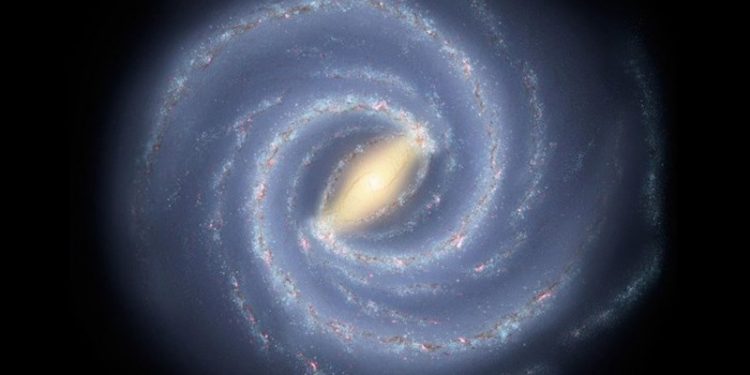Sydney: The Milky Way’s disk of stars is not stable or flat but instead becomes increasingly “warped” and twisted far away from the galaxy’s centre, according to astronomers.
“We usually think of spiral galaxies as being quite flat, like Andromeda which you can easily see through a telescope,” said Professor Richard de Grijs from Macquarie University in Australia.
To understand, the team used 1,339 “standard” stars, each up to 100,000 brighter than our sun, to map the real shape of our home galaxy.
The new 3D map of our galaxy showed that the warped Milky Way disc also contains young stars and confirmed that the warped spiral pattern is caused by torque from the spinning of the Milky Way’s massive inner disc of stars, accordoing to the study published in the Nature Astronomy journal.
From a great distance, our galaxy would look like a thin disk of stars that orbit once every few hundred million years around its central region, where hundreds of billions of stars, together with a huge mass of dark matter, provide the gravitational “glue” to hold it all together.
But the pull of gravity becomes weaker far away from the Milky Way’s inner regions. In the galaxy’s far outer disk, the hydrogen atoms making up most of the Milky Way’s gas disk are no longer confined to a thin plane, but they give the disk an S-like warped appearance.
“It is notoriously difficult to determine distances from the Sun to parts of the Milky Way’s outer gas disc without having a clear idea of what that disc actually looks like,” said Xiaodian Chen from the Chinese Academy of Sciences in Beijing.
“This research provides a crucial updated map for studies of our galaxy’s stellar motions and the origins of the Milky Way’s disk,” added Licai Deng, also from the Chinese Academy of Sciences.
Astronomers have observed a dozen other galaxies which showed similar progressively twisted spiral patterns in their outer regions. So our Milky Way’s twists are rare but not unique, they said.
IANS






































